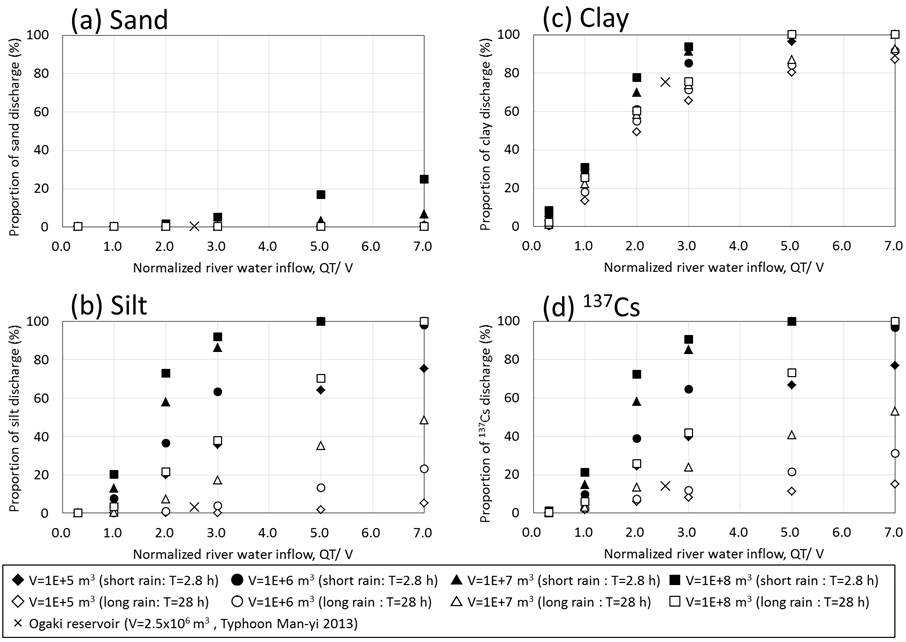Numerical study of sediment and 137Cs discharge out of reservoirs during various scale rainfall events
Published:

Abstract
Contamination of reservoirs with radiocesium is one of the main concerns in Fukushima Prefecture, Japan. We performed simulations using the three-dimensional finite volume code FLESCOT to understand sediment and radiocesium transport in generic models of reservoirs with parameters similar to those in Fukushima Prefecture. The simulations model turbulent water flows, transport of sediments with different grain sizes, and radiocesium migration both in dissolved and particulate forms. To demonstrate the validity of the modeling approach for the Fukushima environment, we performed a test simulation of the Ogaki Dam reservoir over Typhoon Man-yi in September 2013 and compared the results with field measurements. We simulated a set of generic model reservoirs systematically varying features such as flood intensity, reservoir volume and the radiocesium distribution coefficient. The results ascertain how these features affect the amount of sediment or 137Cs discharge downstream from the reservoirs, and the forms in which 137Cs is discharged. Silt carries the majority of the radiocesium in the larger flood events, while the clay-sorbed followed by dissolved forms are dominant in smaller events. The results can be used to derive indicative values of discharges from Fukushima reservoirs under arbitrary flood events. For example the generic model simulations indicate that about 30% of radiocesium that entered the Ogaki Dam reservoir over the flood in September 2015 caused by Typhoon Etau discharged downstream. Continued monitoring and numerical predictions are necessary to quantify future radiocesium migration in Fukushima Prefecture and evaluate possible countermeasures since reservoirs can be a sink of radiocesium.
H. Kurikami, H. Funaki, A. Malins, A. Kitamura & Y. Onishi
Journal of Environmental Radioactivity 164, 73-83 (2016)
DOI: 10.1016/j.jenvrad.2016.07.004
PDF: download
